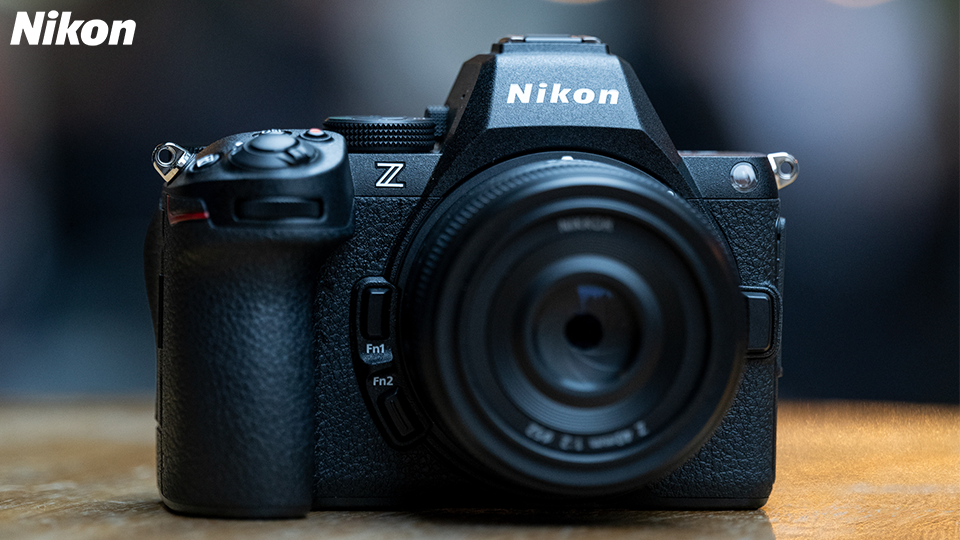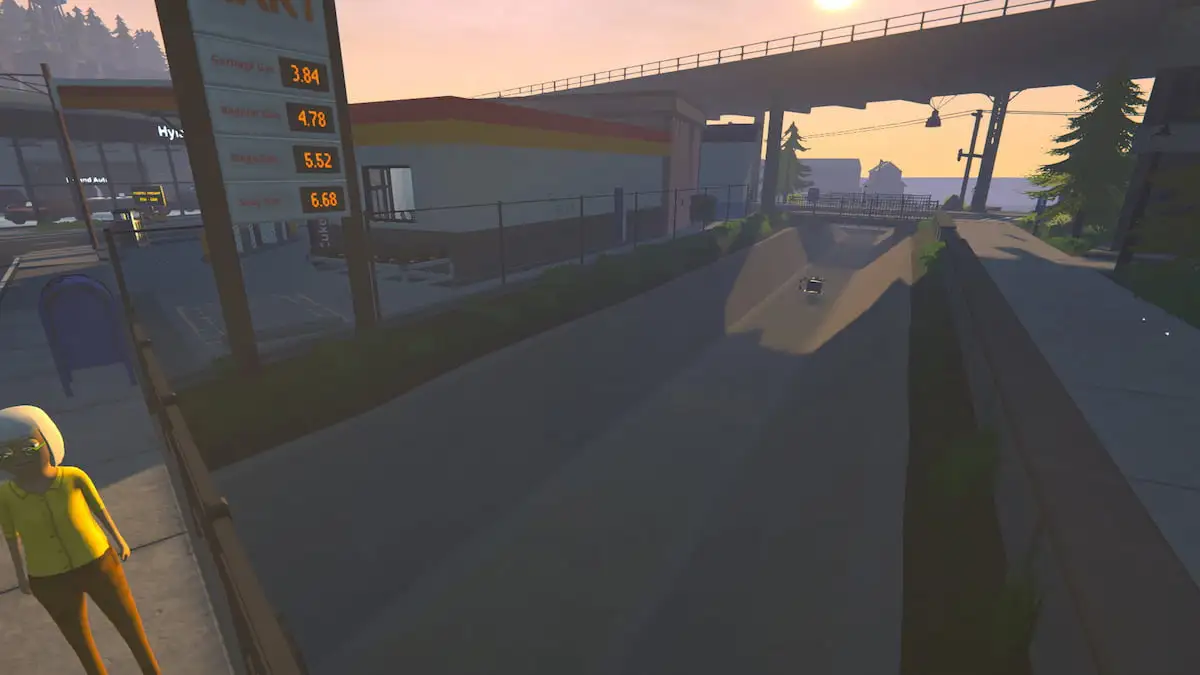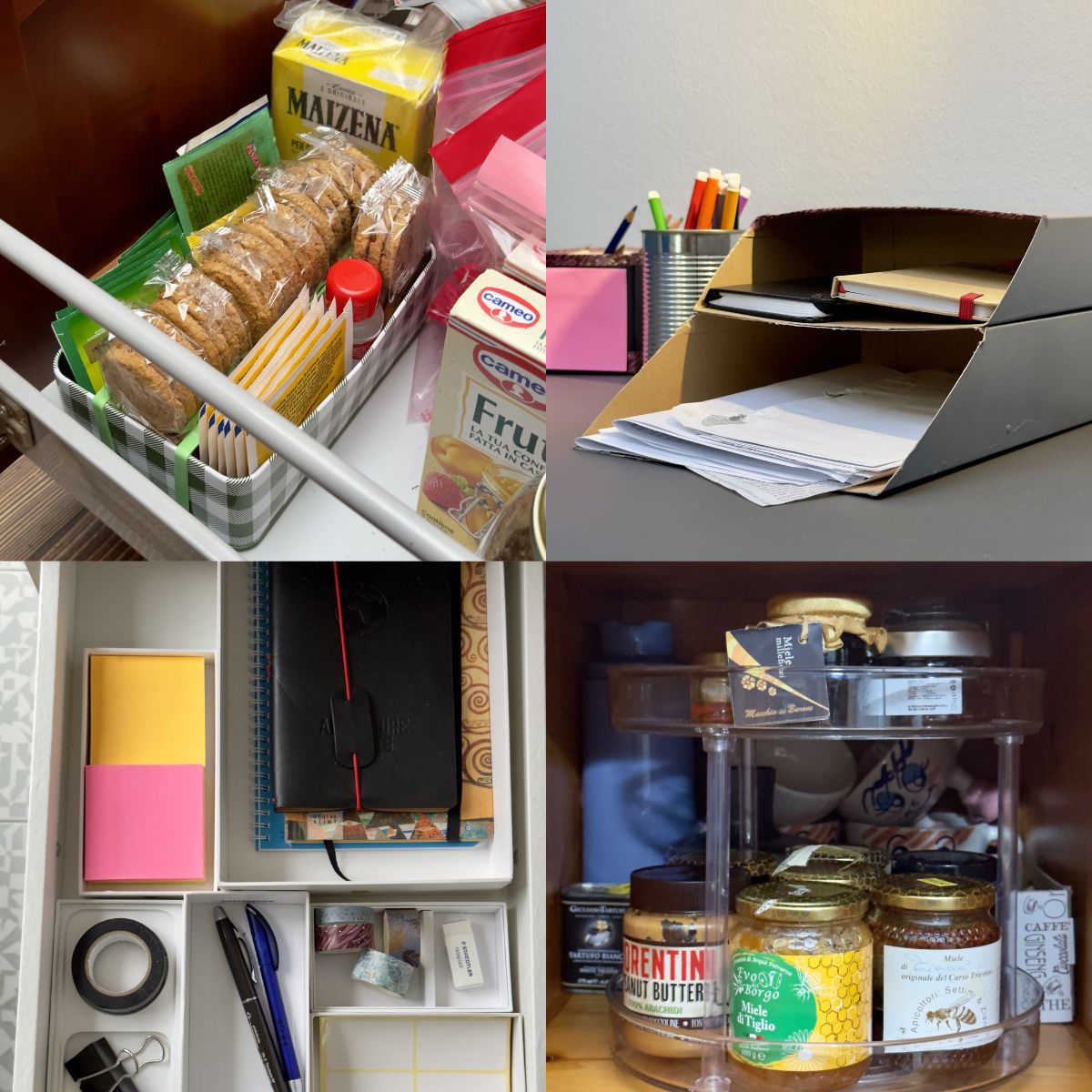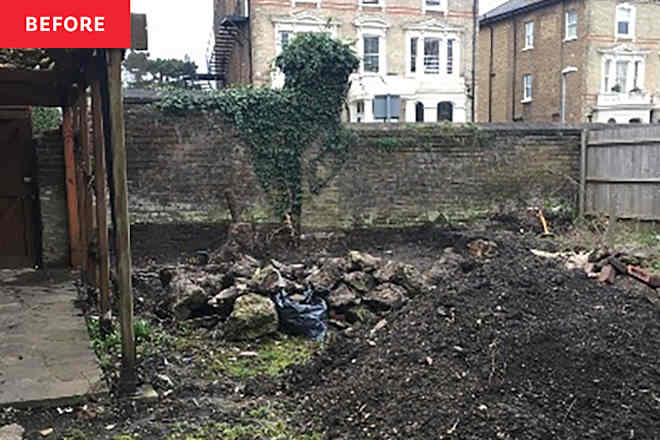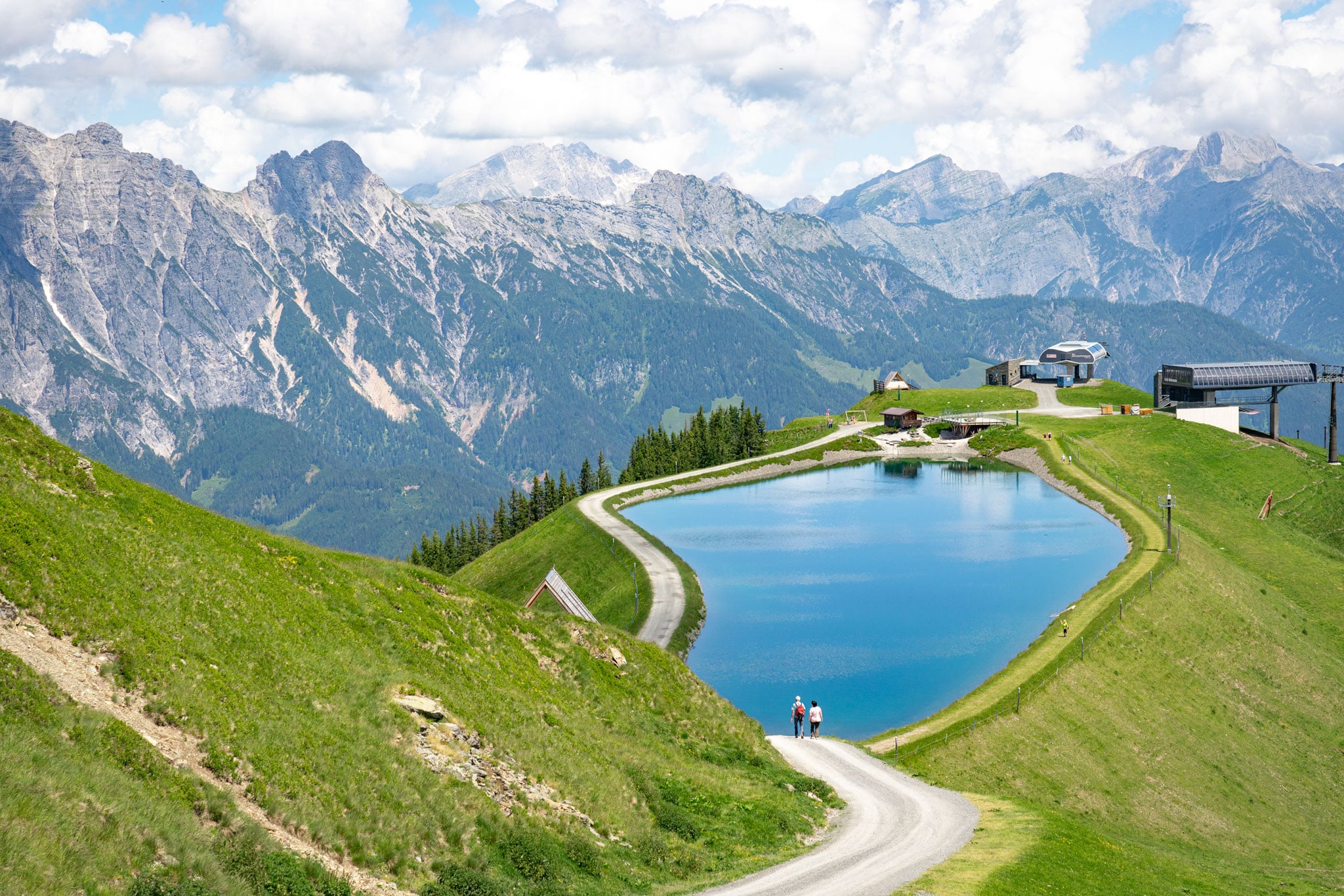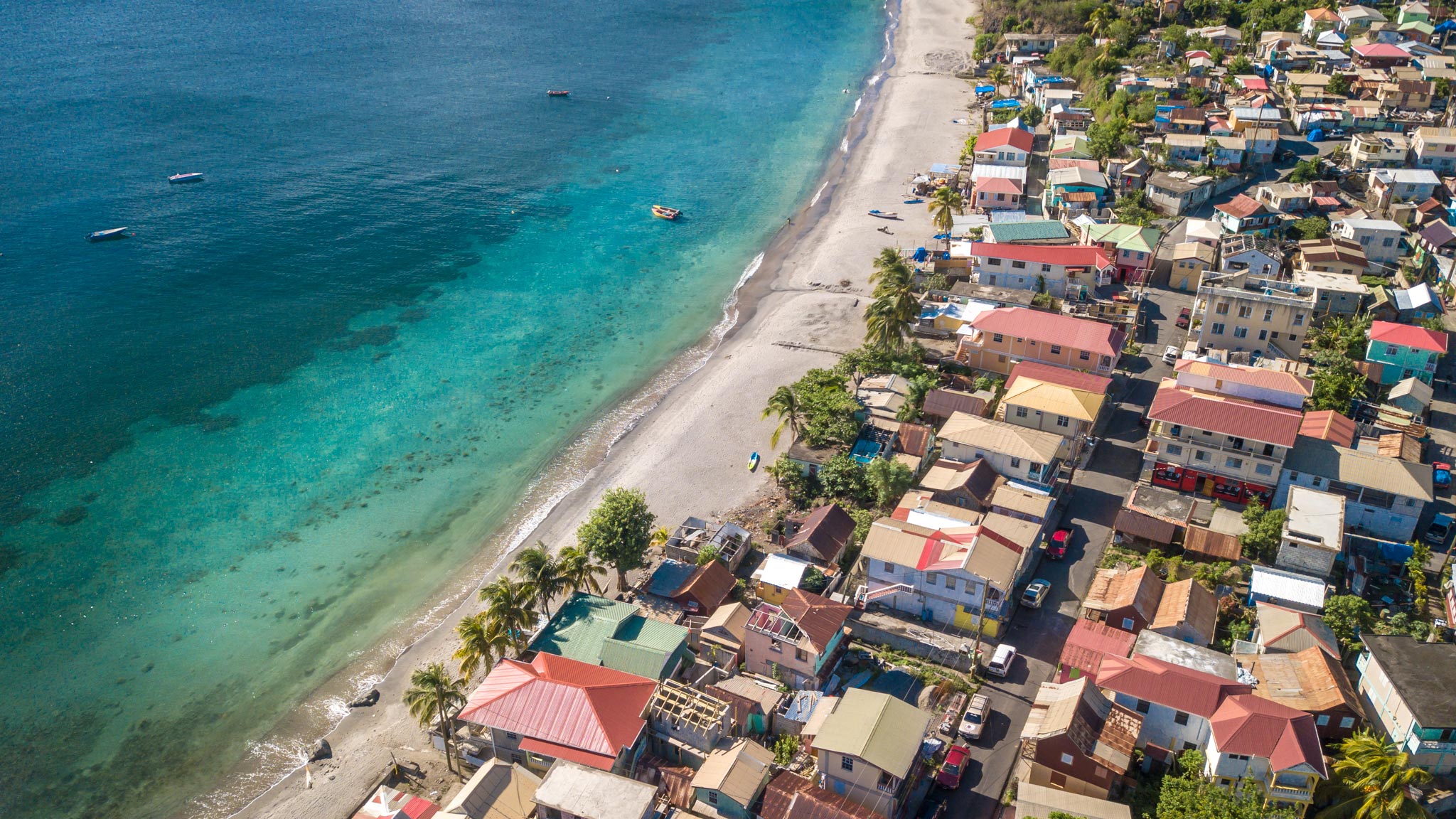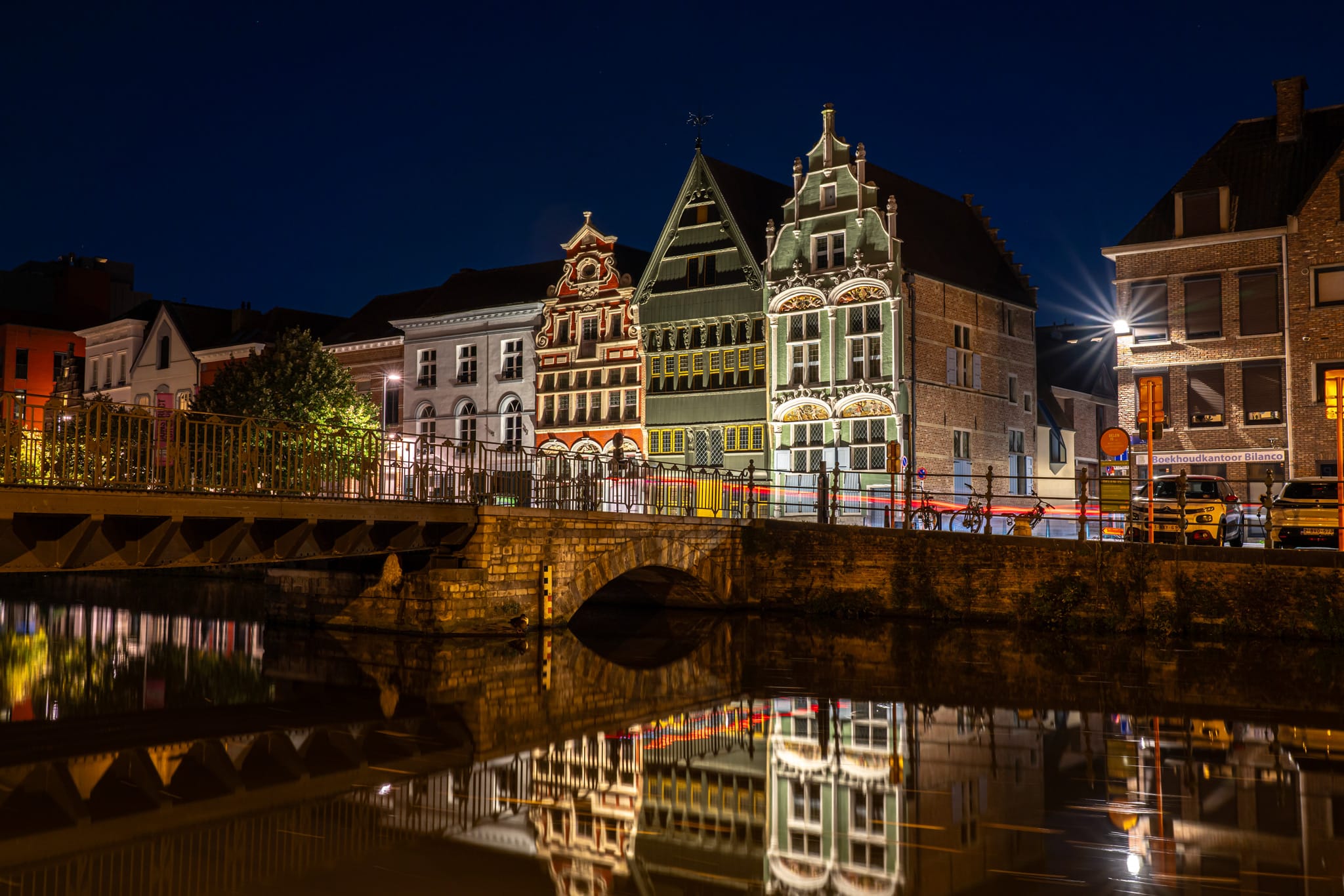Top day trips from Beijing: Explore nearby attractions
Beijing offers a dizzying variety of things to see and do, and the adventures don't stop at the city limits. Here are the top five day trips from Beijing.

Beijing offers a dizzying number of things to see and do, and the adventures don't stop at the city limits. Day trips near the Chinese capital will take you to Ming dynasty tombs, atmospheric ancient villages, spectacular sections of the Great Wall and even a thrilling glass bridge dangling over a vertiginous gorge – all memorable ways to spend a day.
Ancient sites near Beijing reveal more of the history of the Middle Kingdom, building on the rich narrative spun by sights such as the Forbidden City and Summer Palace. Visiting attractions outside Beijing's busy core can also get you away from the crowds, though many sites are thronged by local sightseers, even if they lie off the radar of international visitors.
And you can enjoy all sorts of outdoor activities near Beijing – all it takes is a short trip out of town, and you'll be immersed in stunning forested scenery and clean mountain air. If you're looking to escape the city, here are our top five day trip destinations.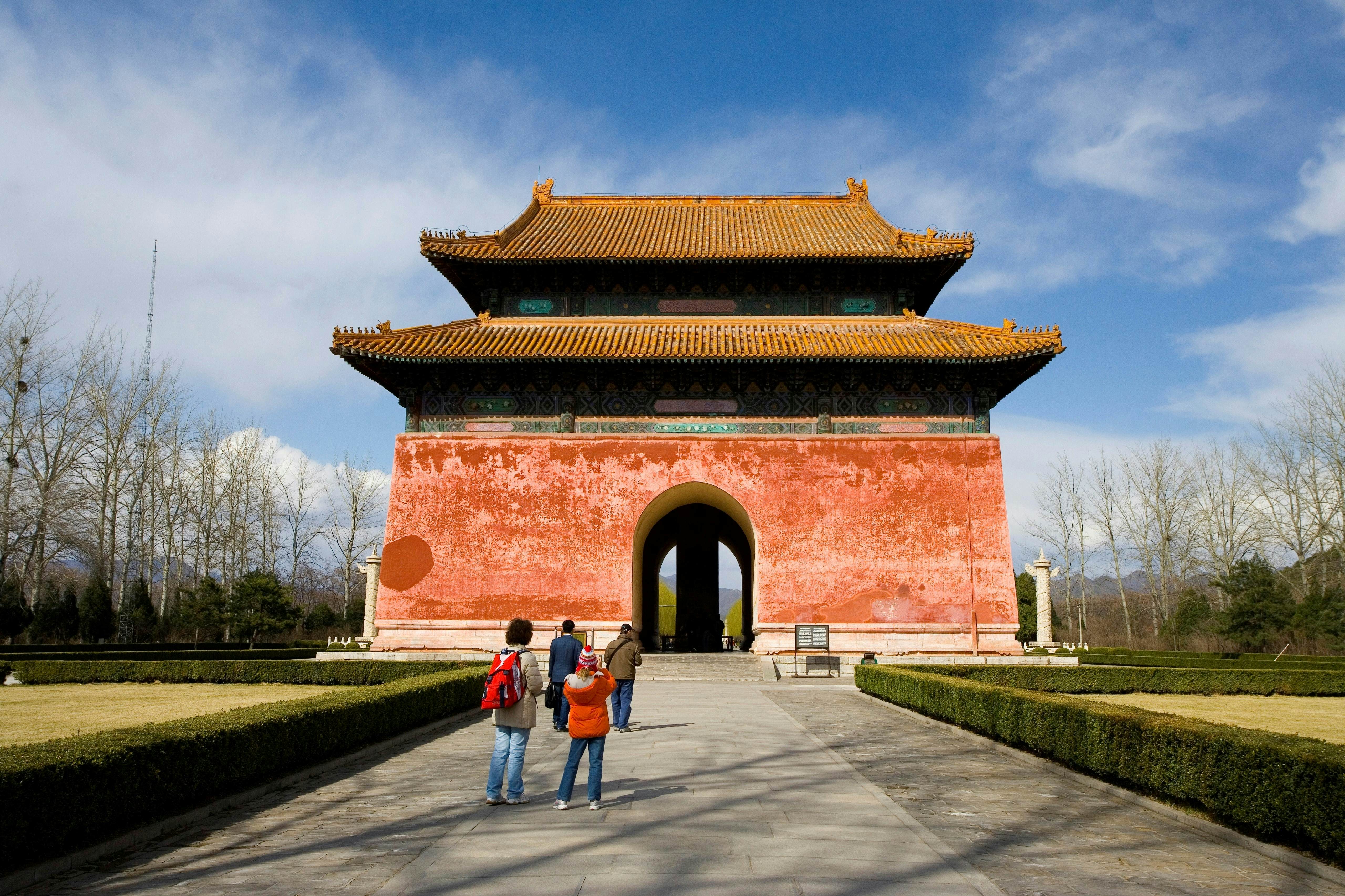
1. Explore the ancient Ming Tombs
Travel time: 45 minutes to 1½ hours (one-way)
You've probably already paid a visit to the home of Beijing's Ming Dynasty emperors in the Forbidden City. Now it's time to take a trip to view their final resting places at the UNESCO-listed Ming Tombs, around 50km (31 miles) northwest of Beijing.
Set at the foot of Tianshou Mountain, you'll find the underground tombs of 13 of the 16 emperors from the Ming dynasty, who ruled China between 1368 and 1644. It's one of the most impressive historical sites near Beijing, and a great way to put the city's history into context.
Three of the mausoleums are open to the public, including the impressive Cháng Líng tomb, which shares architectural similarities with the Forbidden City. It was commissioned by the same emperor, Yongle (1360–1424), the great builder of Beijing, and it follows the same blueprint of imperial gates, halls and courtyards increasing in stature to the Hall of Eminent Favors.
Also worth exploring are the Dìng Líng tomb, where you can descend into the enormous burial chambers of the Wanli Emperor (1563–1620) and his empress and concubines, and Zhāo Líng, the reconstructed tomb of the Longqing Emperor, who only managed a six-year shift on the Dragon Throne before he was entombed here in 1572.
You'll arrive at the tombs complex via the Spirit Way, a 7km (4.3-mile) road lined with palace gatehouses, archways, ornamental pavilions, stone statues and the Great Palace Gate, a point where even emperors were required to dismount to enter.
How to get to the Ming Tombs from Beijing:
Bus 872 is the most direct way to reach the Ming Tombs; it departs from the north side of Deshengmen Arrow Tower and the ride takes one hour. Alternatively, you can arrange a return trip by taxi, or take the Changping Line on the subway, which will drop you 2km (1.2 miles) from the tombs; you can walk to the tombs or take a taxi.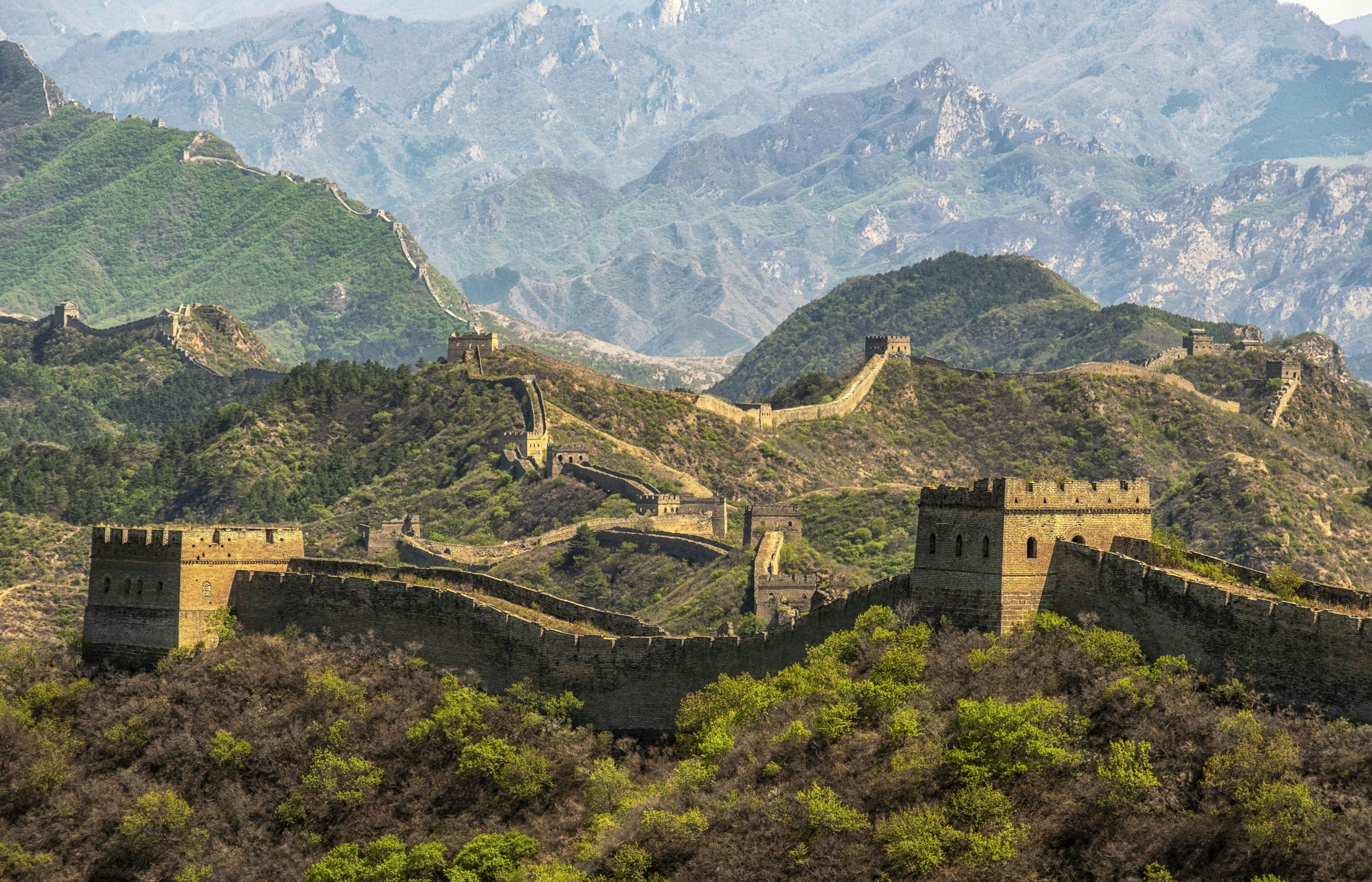
2. Visit the Great Wall of China: Best sections for day trips
Travel time: 1–2 hours (one-way)
Snaking along mist-cloaked mountains on its epic 21,196km (13,171-mile) journey across China, the Great Wall does not disappoint. In fact, great doesn't quite cut it – extraordinary, unmissable and astonishing are more fitting superlatives.
Beijing is one of the best places in China to access the Great Wall. The trick, however, is to pick the section that best suits your tastes and expectations. Are you happy to see the wall at its most polished and restored, visiting the sections closest to Beijing? Or do you prefer a wilder and more remote experience, even if that means traveling further? Are you here for a long hike, or is a casual cable-car ride more your style?
Just 70km (43 miles) from the capital, the heavily restored sections of the wall at Mutianyu and Badaling are two of the most popular day trip destinations from Beijing, and certainly the most accessible parts of the wall. The views are astounding, and these stretches are easy to explore, with cable cars, chairlifts and even toboggan runs, but they're very much geared towards tourist buses and the crowds can be huge. The restored section of wall at Jinshanling is further from the city but also quieter.
At the other end of the scale are the wilder, less-visited sections of wall at Jiankou, Simatai, Huanghua Cheng, Zhuangdaokou and Gubeikou, which offer a more serene and unspoiled experience, with half-crumbling masonry and quiet hiking trails that will make you feel like a proper explorer. However, it can be time-consuming to reach these sections of the so-called "wild Wall" by public transport.
How to get to the Great Wall from Beijing:
Badaling is by far the easiest section of wall to reach, thanks to a high-speed train that takes only 30 minutes, leaving from Qinghe Railway Station or Beijing North Railway Station. Public transport can also get you to all the other sections of wall close to Beijing, but this may involve a fiddly string of bus and train connections; an easier option is to take one of the direct tourist buses departing from Dongzhimen Transport Hub.
If your budget can stretch to booking a private car, this is by far the best option, especially if you're in a group. You'll have the comfort of door-to-door transport and the transfers will be faster in both directions. Otherwise, consider joining an organized tour with Beijing Hikers or Wild Wall Experiences.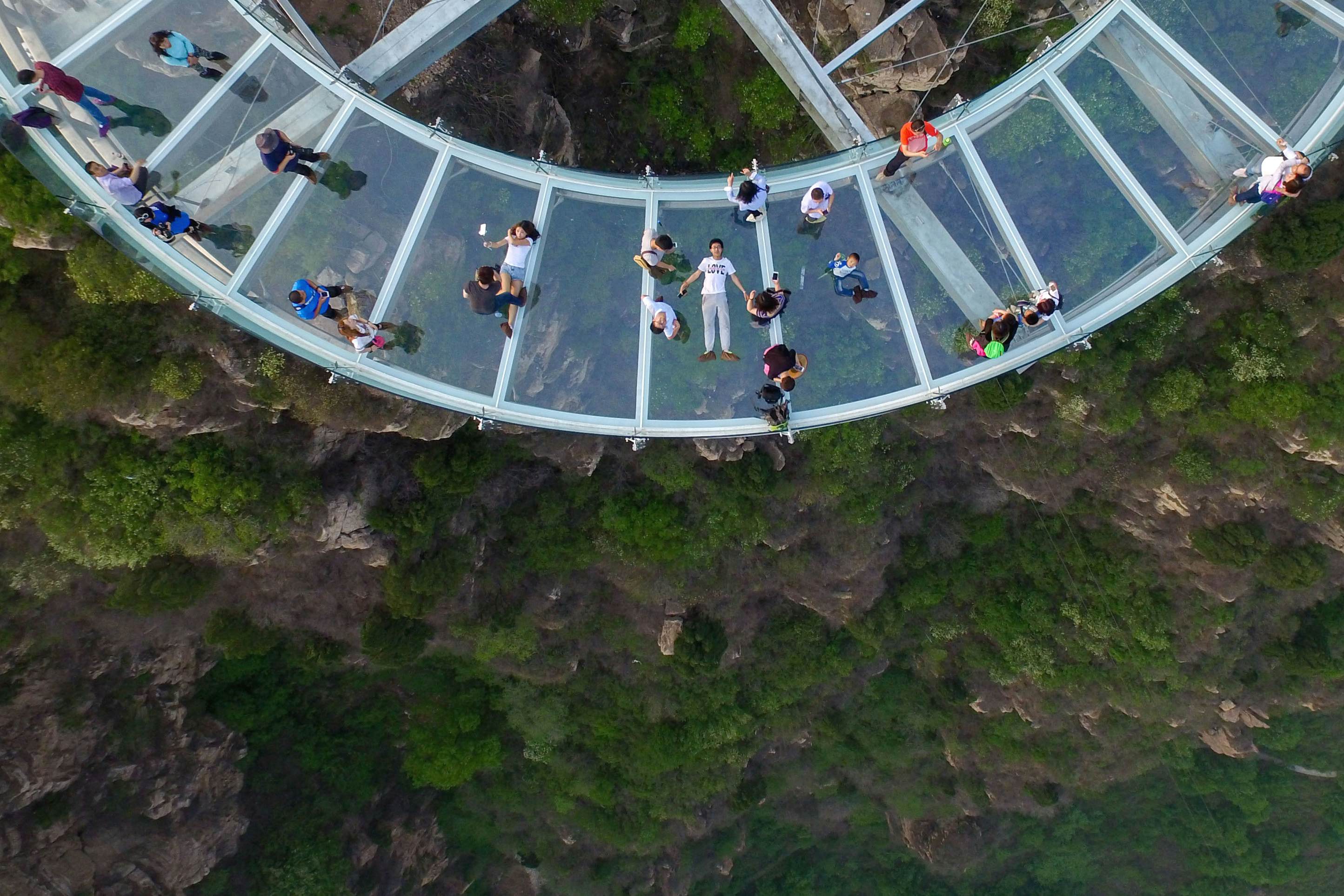
3. Don't look down at the Shilinxia Glass Viewing Platform
Travel time: 1–2½ hours (one-way)
China can't seem to get enough of glass viewing platforms and skywalks – at the latest count, there were more than 2300 scattered across the country, and the more daring, precariously perched and futuristic looking, the better.
About 70km (43 miles) from Beijing in Pinggu District, the Shilinxia Glass Viewing Platform is a classic example of the genre. This unique, cantilevered glass bridge juts out 32m (105ft) over the Jingdong Stone Forest Gorge, floating 400m (1312ft) above the valley floor. The see-through guardrails and floor only add to the drama.
The platform looks a little like a UFO touching down on the clifftop, and it's an exhilarating spot from which to admire the stunning scenery of the Shilinxia Scenic Area, which follows the gorge for more than 12km (7.5 miles). A cable car will take you most of the way to the platform, but you'll have to walk the final section.
How to get to the Shilinxia Glass Viewing Platform from Beijing:
Arranging a private car is the easiest way to visit, but you can also take bus 852 from Dongzhimen Transport Hub to Pinggu Bus Terminal, then bus 25 to the Pinggu Shilixia Scenic Area. 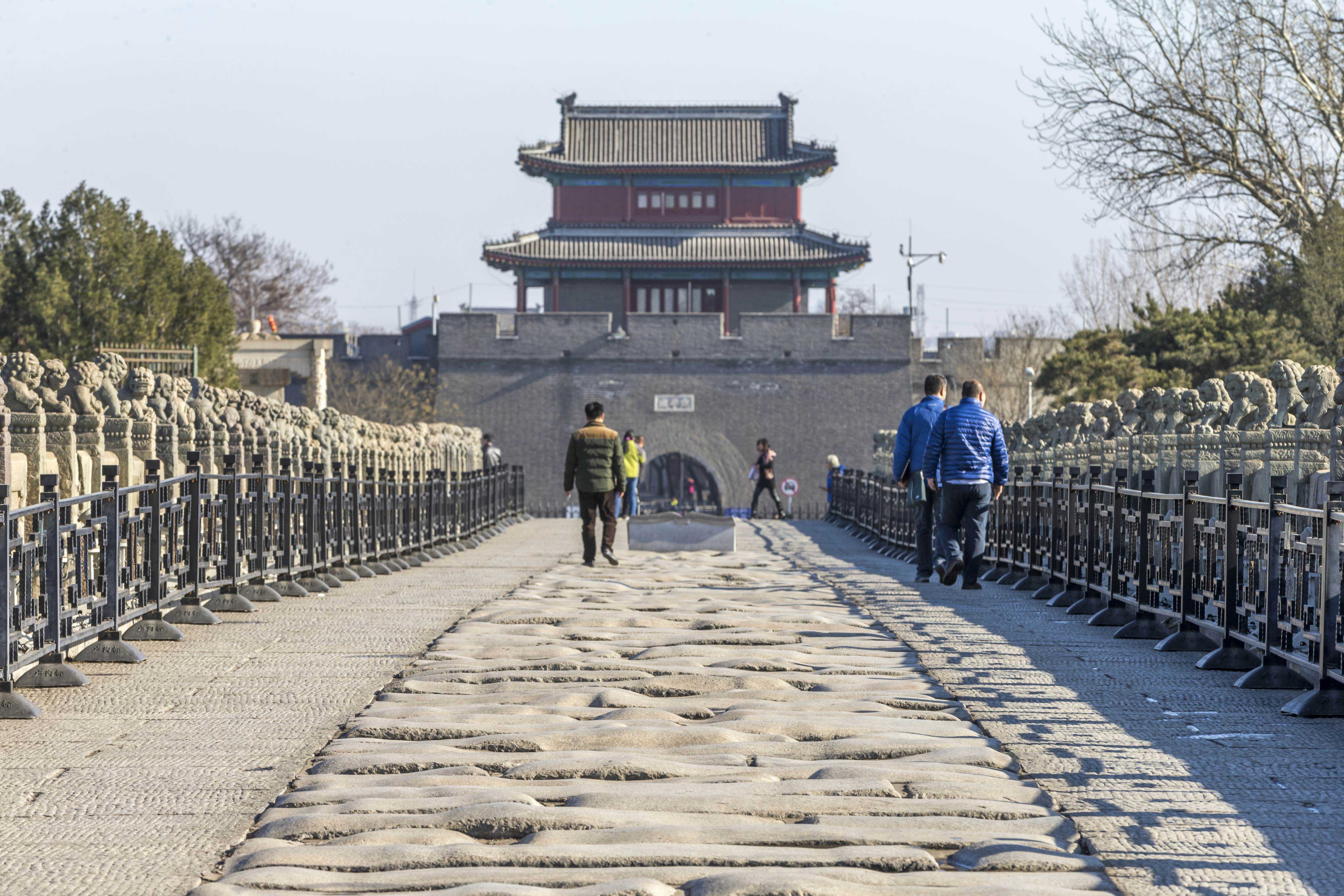
4. Check out Wanping's fabled multi-arched bridge
Travel time: 30–45 minutes (one-way)
Just a short jaunt to the southwestern fringes of Beijing will take you to the walled city of Wanping, which is famed for its multi-arched Marco Polo Bridge. Dating to 1189 and stretching for 265m (869ft) over the Yonding River, this is Beijing's oldest bridge, lined with 485 hand-carved stone lions.
The bridge was named for the famed Italian explorer, who described being impressed by its architecture during his journeys along the Silk Road in the 13th century, as detailed in The Travels of Marco Polo. The bridge is also famous for a military clash between Chinese and Japanese soldiers in 1937, which ignited the Second Sino-Japanese War.
Discover the backstory of this infamous incident at the nearby Museum of the War of Chinese People's Resistance Against Japanese Aggression. Wanping is also noteworthy for its 17th-century Ming dynasty gate and the 6m-high (20ft) walls that encircle the old town – a rewarding place for a wander.
How to get to Wanping from Beijing:
Wanpingcheng subway station is on Line 16 of the Beijing Subway, or you can take Line 14 to Dawoyao station. From there, it's a 1km (0.6-mile) walk to the East Gate of Wanping Town.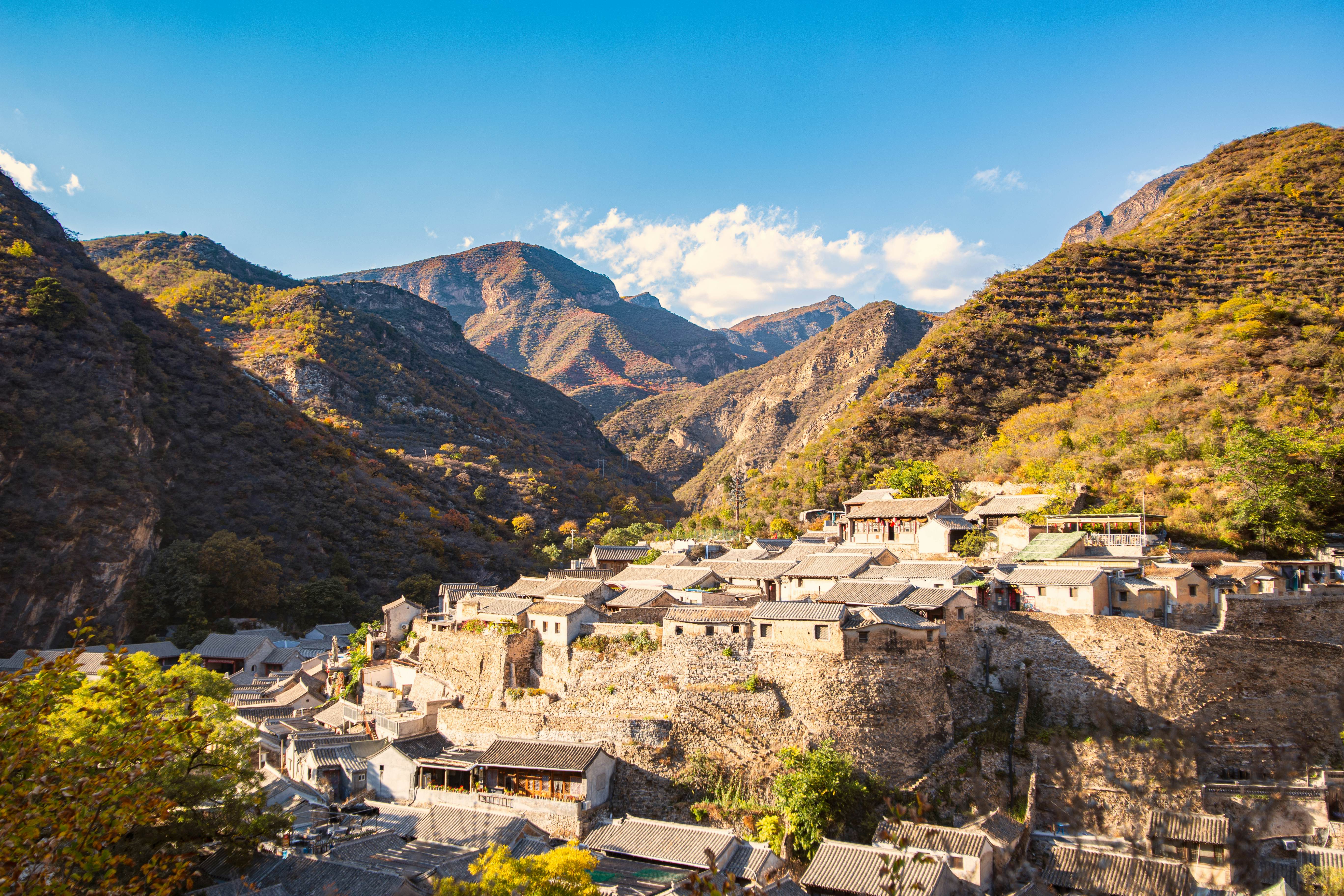
5. Step back in time in the country village of Cuandixia
Travel time: 2 hours (one-way)
The perfect antidote to the frenetic pace of Beijing life, the lovely country village of Cuandixia offers a genuine escape from the city bustle. Nestled in a valley 90km (56 miles) west of Beijing, it's famed for its fine collection of 500-year-old stone courtyard houses from the Qing and Ming dynasties, many of which have been converted into restaurants and inns.
The backdrop is lovely – terraced orchards and fields dotted with ancient houses rise up the hillside and cobblestone alleyways lead to historic temples. It's the perfect place
to indulge fantasies of stepping into a Chinese legend or reliving the
drama of classic wuxia (literally "martial arts and chivalry") movies.
How to get to Cuandixia from Beijing:
To get to Cuandixia, take bus 22 from opposite Jin'anqiao station to reach Zhaitang; from here, it's a short taxi ride to the ancient city. Otherwise, hire a car and driver for a day trip from Beijing.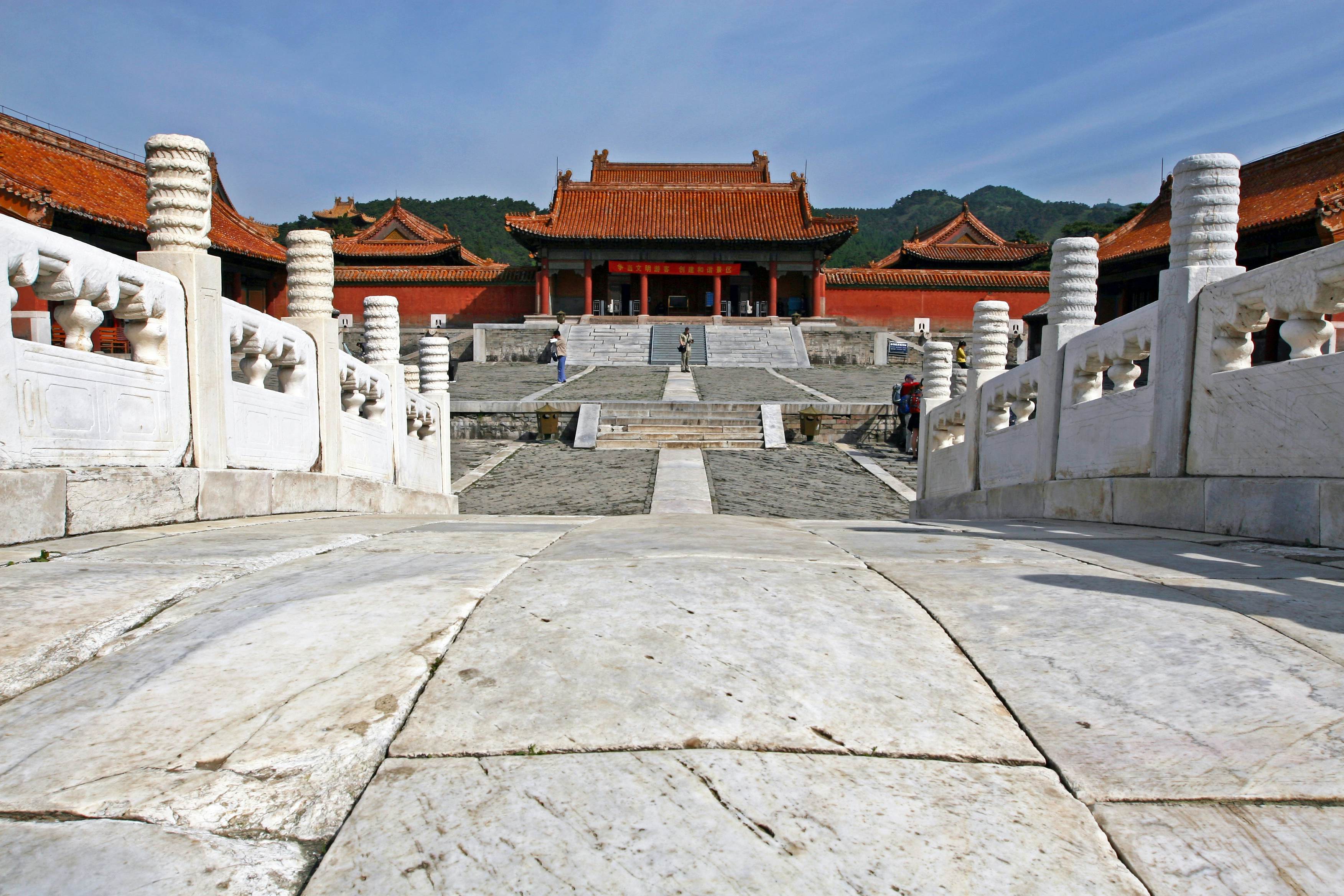
Other popular day trips from Beijing
There are many more attractions outside Beijing that are popular destinations for day trips, but some are a bit further out and best visited with a chartered car and driver, or on an overnight trip.
- Qing Tombs, Zunhua: About 125km (78 miles) east of Beijing, the vast Eastern Qing Tombs complex at Zunhua in Hebei Province includes the tombs of five Qing Dynasty emperors, 15 empresses and 136 imperial concubines, amongst other members of the royal line. Get here by chartered car or by bus from Sihui Long-Distance Bus Station in around three hours (one-way).
- Zhoukoudian Anthropological Museum: About 46km (29 miles) southwest of Beijing, the "Peking Man Site" at Zhoukoudian covers a cave system where 670,000-year-old bones of prehistoric proto-humans were uncovered in the 1920s. The site museum has the world's largest collection of bones from Homo erectus – the precursor to modern man. Get here by public bus, tour bus, or chartered car in around 1½ hours (one-way).
- Nanshan Ski Resort: Around 78km (48 miles) east of Beijing near Henanzhai, Beijing's largest ski resort has 7.5km (4.7 miles) of skiing and snowboarding slopes and three chairlifts. Once the snow melts, the forested mountains here are popular with hikers. Get here by shuttle bus from the Beijing Subway stations at Shaoyaoju, Sanyuanqiao and Wudaokou; the trip takes about 1½ hours (one-way) from central Beijing.
Planning a day trip from Beijing
Most day trips from the city involve a few hours of travel each way, so you'll want to get an early start. Traveling with a chartered car and driver may get you to your destination more quickly than making several changes on public transport but it will cost more. For a family-friendly day trip from Beijing, pick somewhere with a shorter travel time.
Bring drinks and snacks for the journey and for hikes – meals are easy to find at most day trip destinations in this food-obsessed nation, but once you set out along sections of the "wild Wall," you'll find few amenities. Wrap up warm for day trips in winter; icy winds blow across the mountains around Beijing from November to March.






































